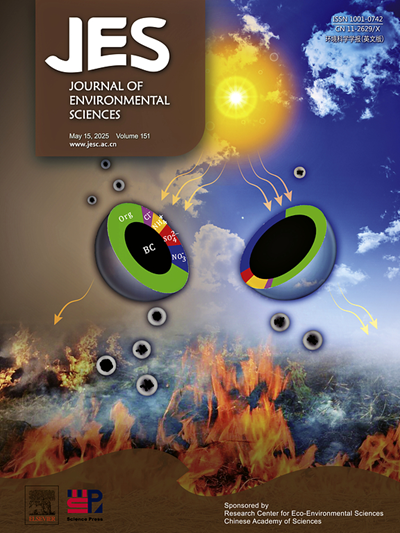Gut dysbiosis exacerbates inflammatory liver injury induced by environmentally relevant concentrations of nanoplastics via the gut-liver axis
IF 5.9
2区 环境科学与生态学
Q1 ENVIRONMENTAL SCIENCES
引用次数: 0
Abstract
As an emerging and potentially threatening pollutant, nanoplastics (NPs) have received considerable global attention. Due to their physical properties and diminutive size, NPs ingestion can more easily cross biological barriers and enter the human and animal body. Despite reports of hepatotoxicity associated with NPs, their impact and potential underlying mechanisms remain elusive. In this study, we investigated the impact of NPs at concentrations found in the environment on the gut flora, intestinal barrier function, liver pyroptosis, and inflammation in mice following 12 weeks of exposure. To further validate the involvement of gut flora in inflammatory liver damage caused by NPs, we utilized antibiotics to remove the intestinal flora and performed fecal microbiota transplantation. We confirmed that NPs exposure altered the gut microbiota composition, with a notable rise in the proportions of Alloprevotella and Ileibacterium while causing a decrease in the relative proportions of Dubosiella. This disruption also affected the gut barrier, increasing lipopolysaccharides in circulation and promoting liver pyroptosis. Importantly, mice receiving fecal transplants from NPs-treated mice showed intestinal barrier damage, liver pyroptosis, and inflammation. However, NPs effects on the intestinal barrier and liver pyroptosis were attenuated by antibiotics depletion of the commensal microbiota. In summary, our current research revealed that extended exposure to environmentally relevant concentrations of NPs resulted in inflammatory damage to the liver. Additionally, we have identified for the first time that imbalances in intestinal flora are crucial in liver pyroptosis induced by NPs.
肠道生态失调加剧了由环境相关浓度的纳米塑料通过肠-肝轴引起的炎症性肝损伤
纳米塑料作为一种新兴的具有潜在威胁的污染物,受到了全球的广泛关注。由于其物理性质和微小的尺寸,NPs的摄入更容易跨越生物屏障进入人和动物体内。尽管有与NPs相关的肝毒性报道,但其影响和潜在机制仍然难以捉摸。在这项研究中,我们研究了环境中浓度的NPs在暴露12周后对肠道菌群、肠道屏障功能、肝脏焦亡和炎症的影响。为了进一步验证肠道菌群参与NPs引起的炎症性肝损伤,我们使用抗生素去除肠道菌群并进行粪便菌群移植。我们证实,NPs暴露改变了肠道微生物群的组成,Alloprevotella和回肠杆菌的比例显著上升,而Dubosiella的相对比例则下降。这种破坏也会影响肠道屏障,增加循环中的脂多糖,促进肝脏焦亡。重要的是,接受nps处理小鼠粪便移植的小鼠表现出肠屏障损伤、肝脏焦败和炎症。然而,NPs对肠道屏障和肝脏焦亡的影响因抗生素消耗共生菌群而减弱。总之,我们目前的研究表明,长期暴露于环境相关浓度的NPs会导致肝脏炎症损伤。此外,我们首次发现肠道菌群失衡对NPs诱导的肝焦亡至关重要。
本文章由计算机程序翻译,如有差异,请以英文原文为准。
求助全文
约1分钟内获得全文
求助全文
来源期刊

Journal of Environmental Sciences-china
环境科学-环境科学
CiteScore
13.70
自引率
0.00%
发文量
6354
审稿时长
2.6 months
期刊介绍:
The Journal of Environmental Sciences is an international journal started in 1989. The journal is devoted to publish original, peer-reviewed research papers on main aspects of environmental sciences, such as environmental chemistry, environmental biology, ecology, geosciences and environmental physics. Appropriate subjects include basic and applied research on atmospheric, terrestrial and aquatic environments, pollution control and abatement technology, conservation of natural resources, environmental health and toxicology. Announcements of international environmental science meetings and other recent information are also included.
 求助内容:
求助内容: 应助结果提醒方式:
应助结果提醒方式:


